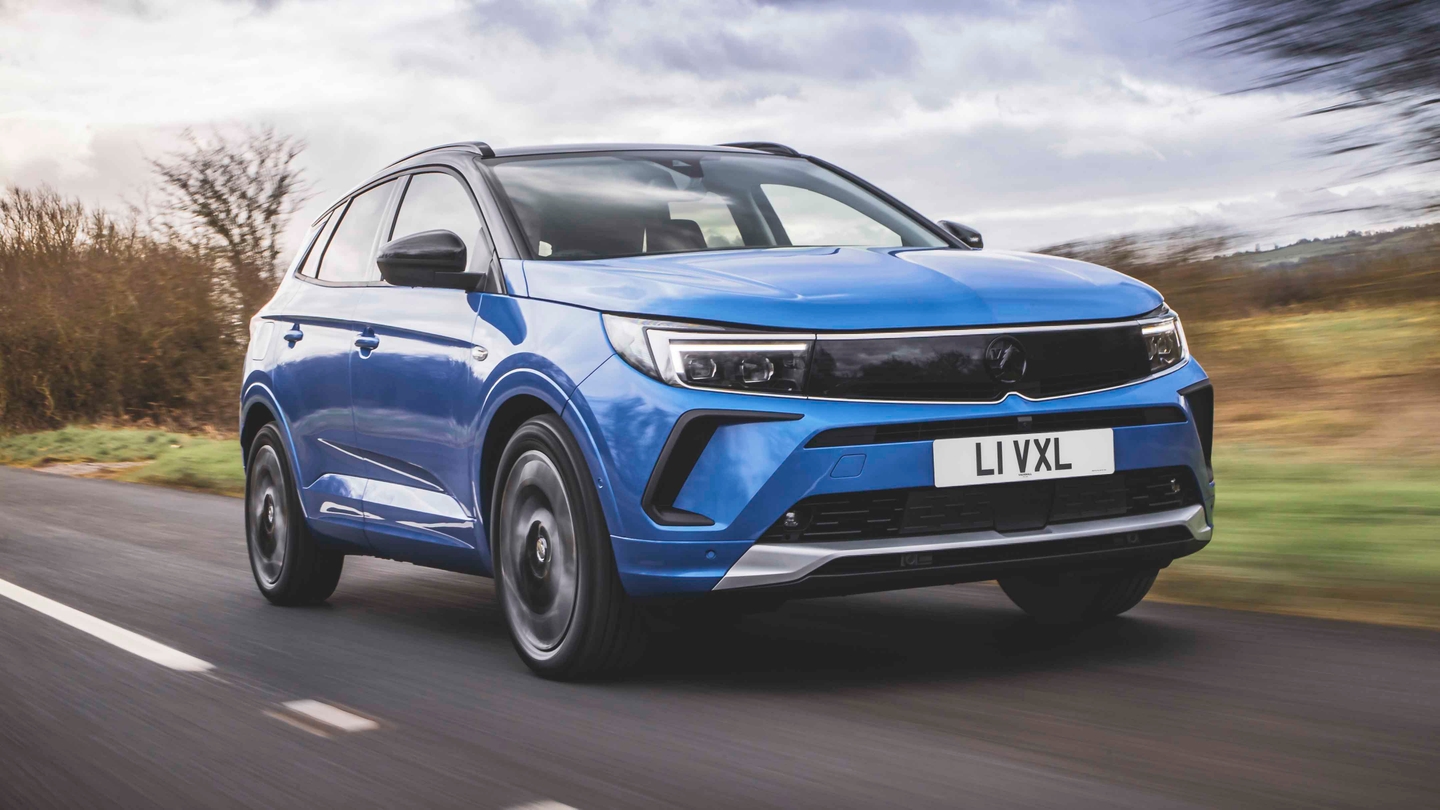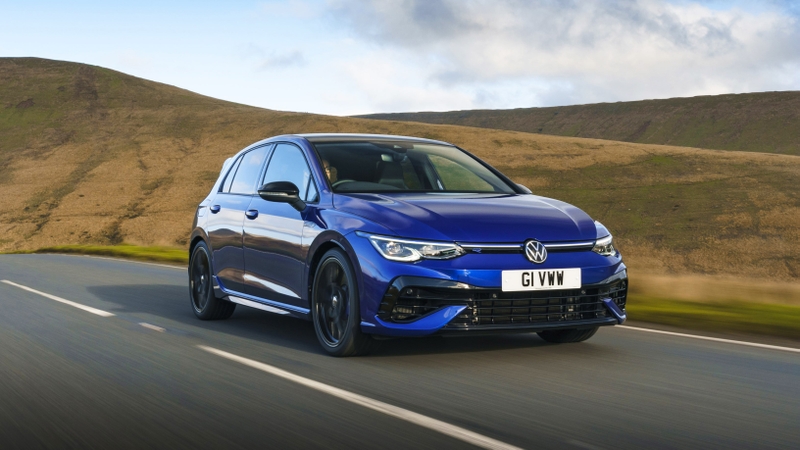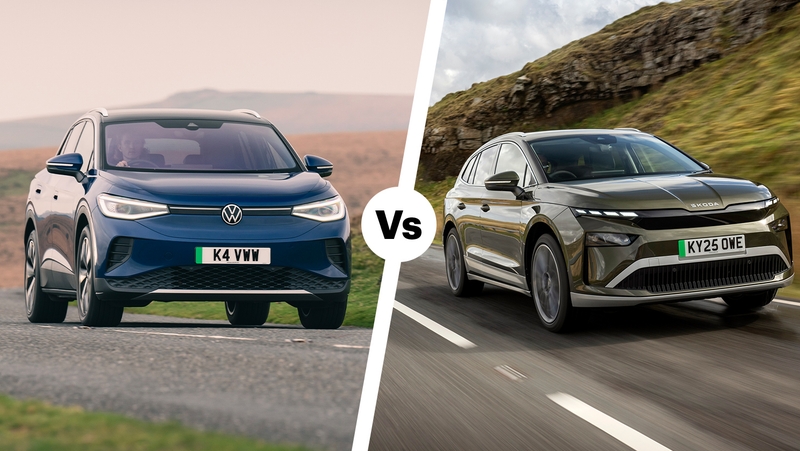
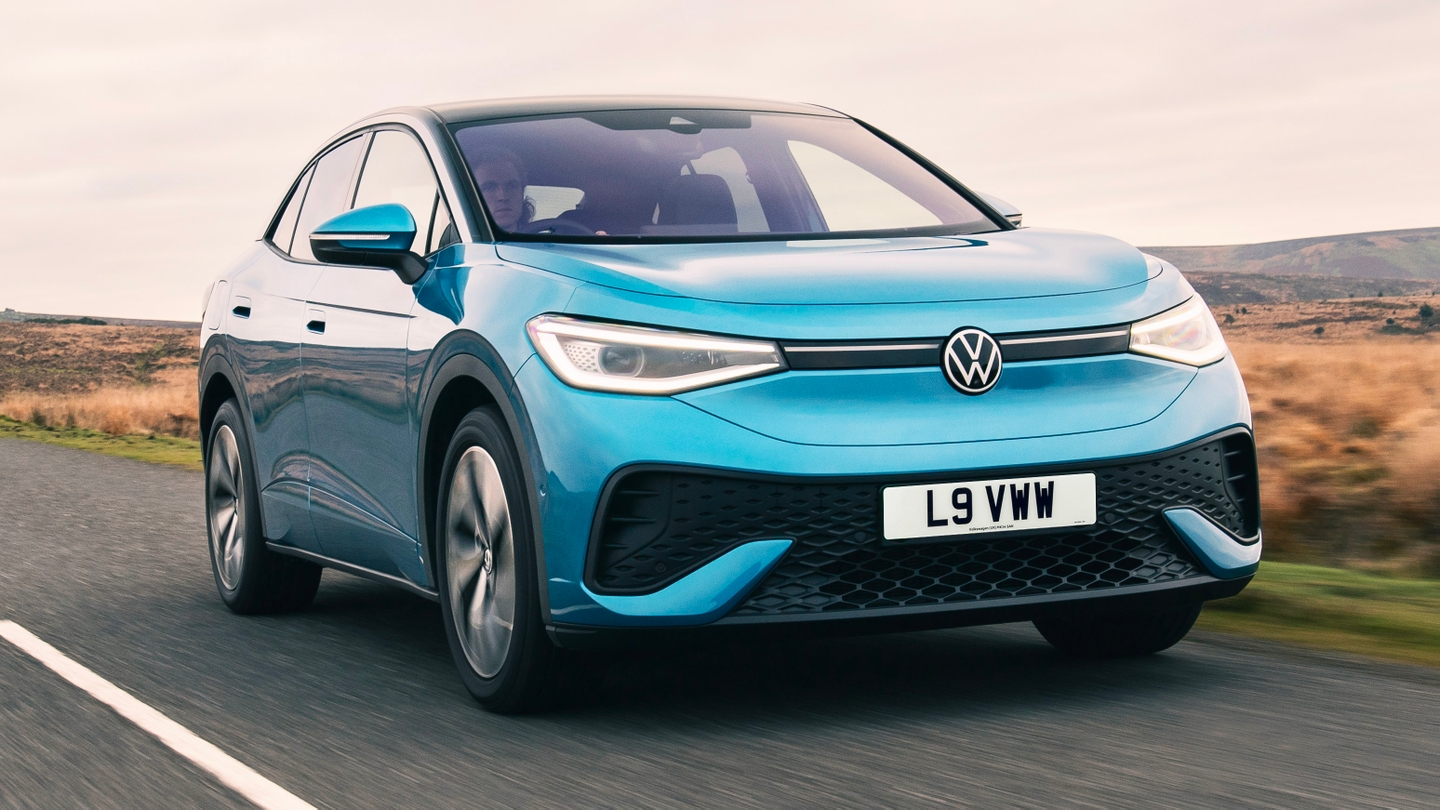
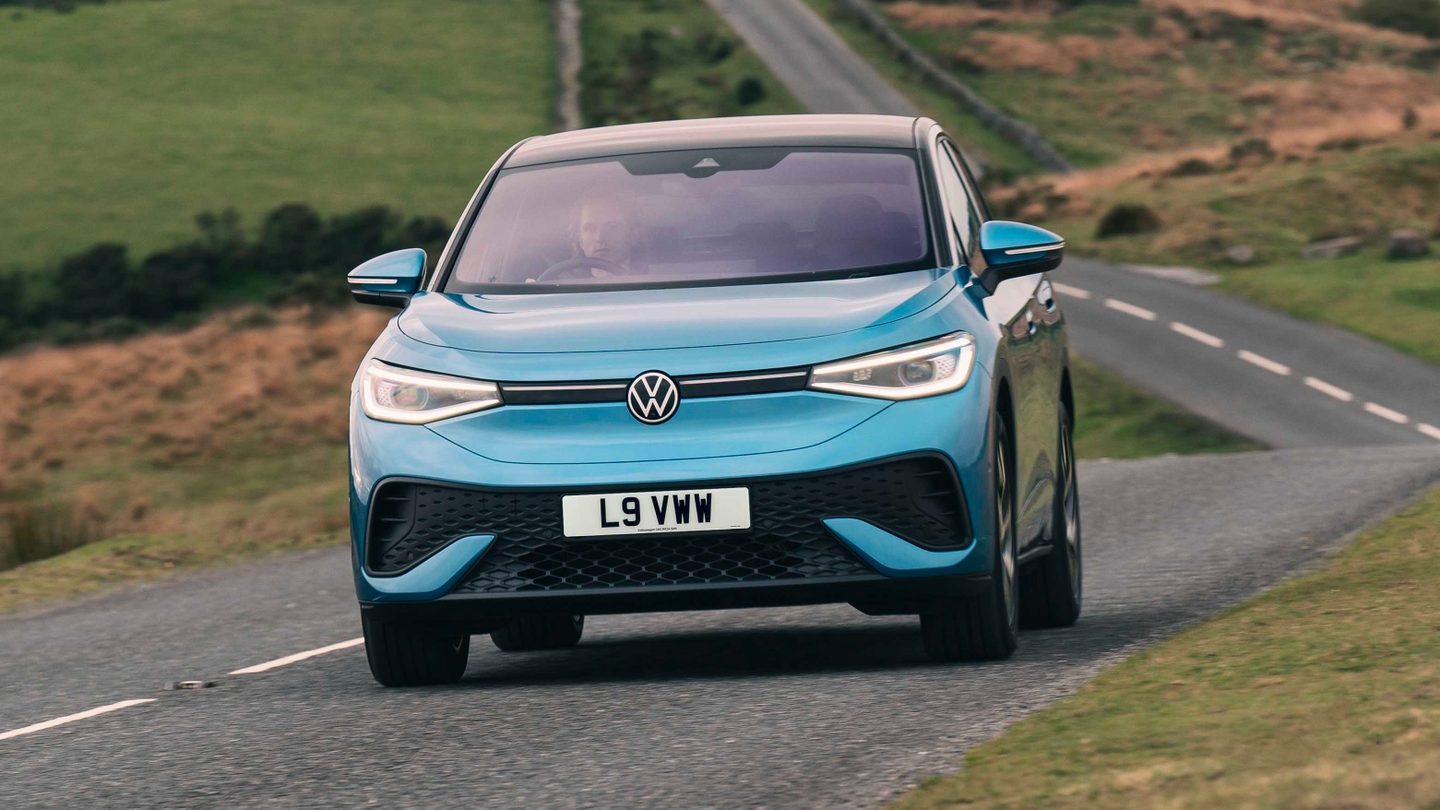
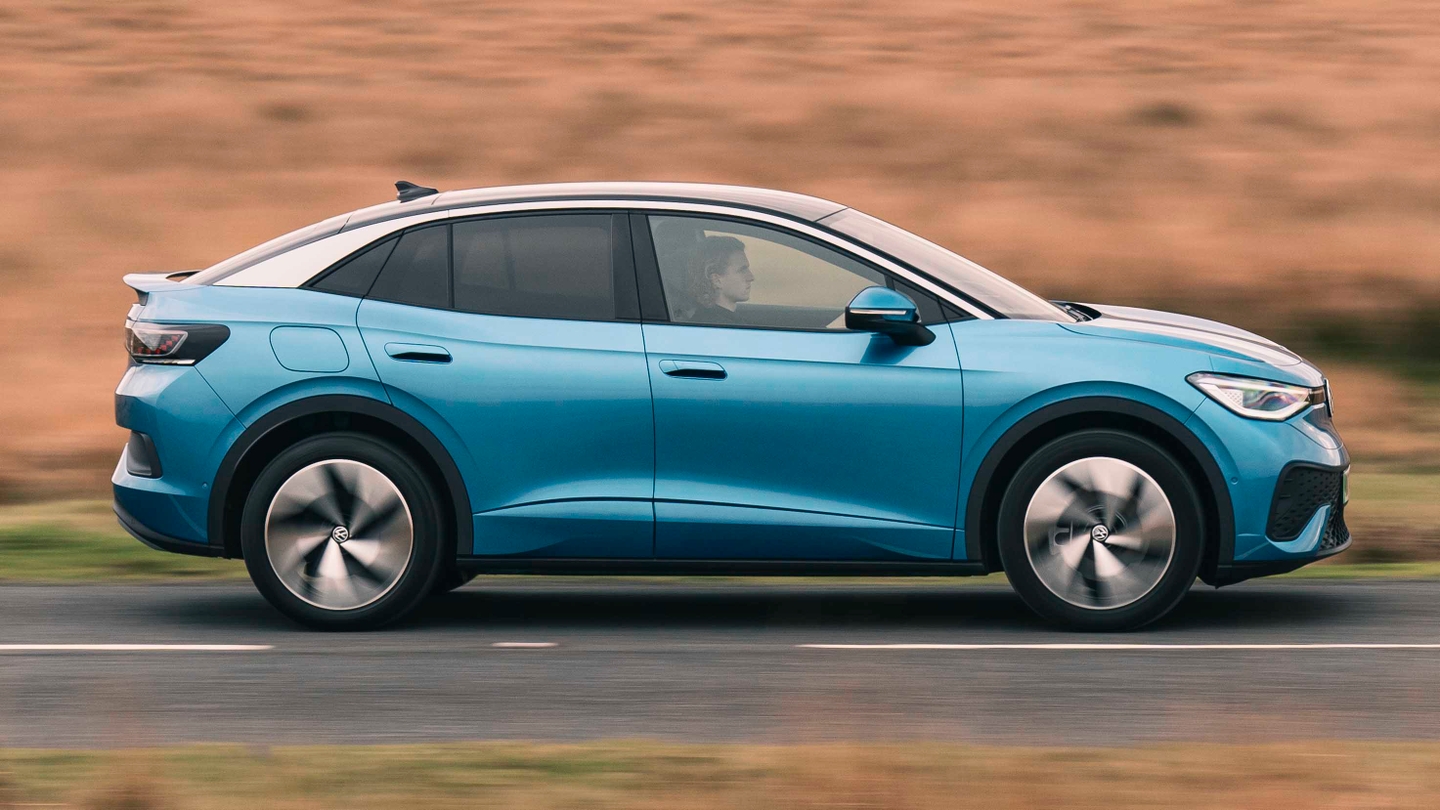
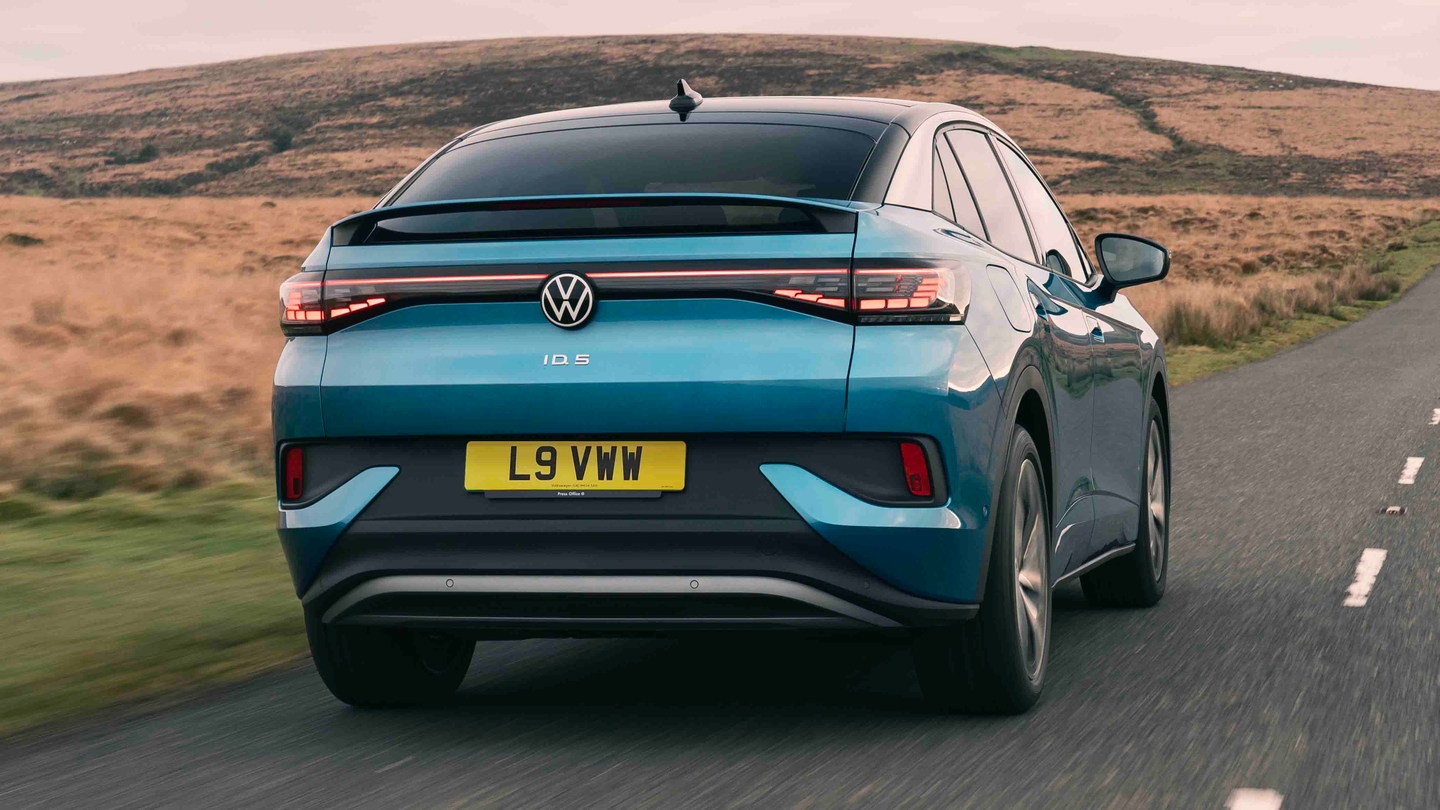
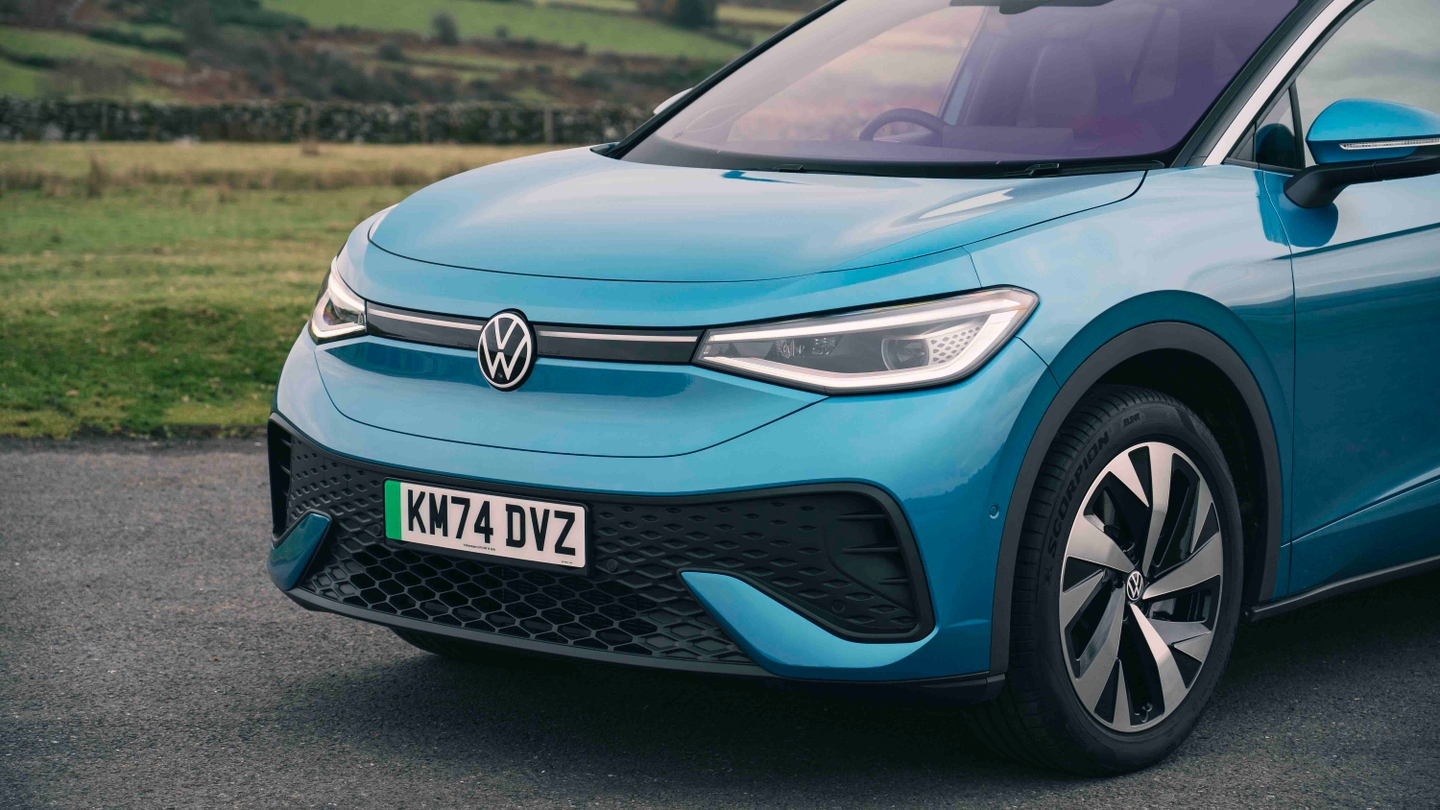
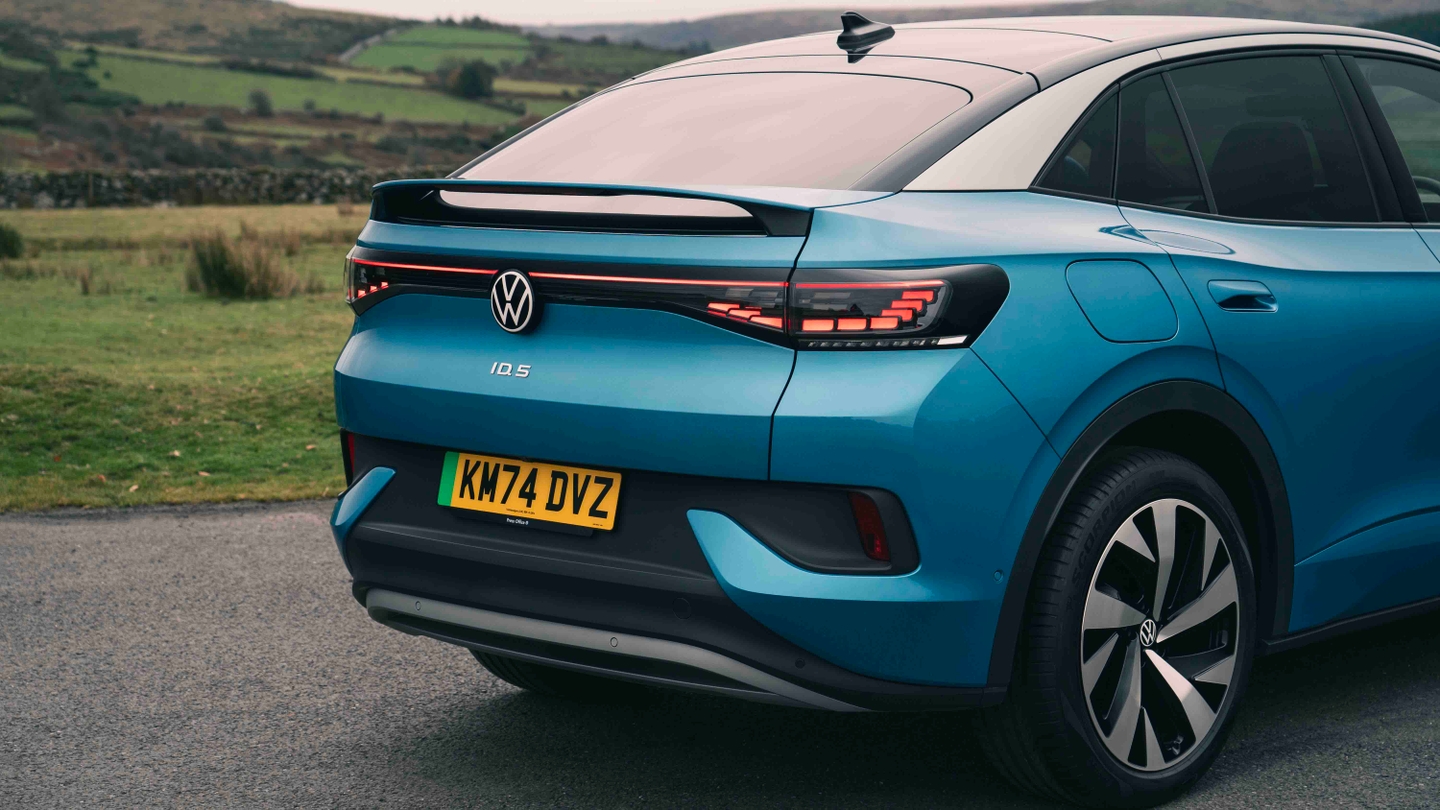
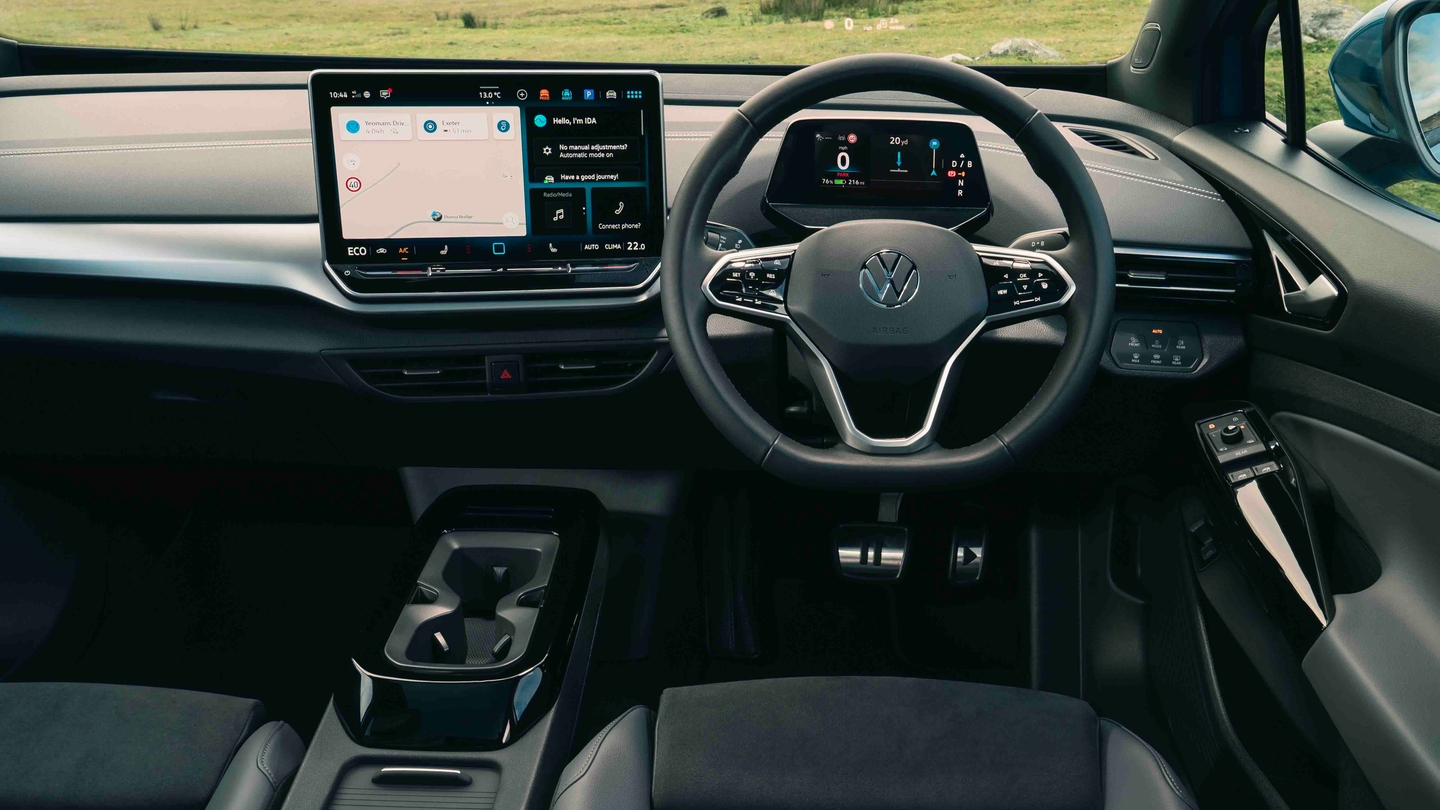
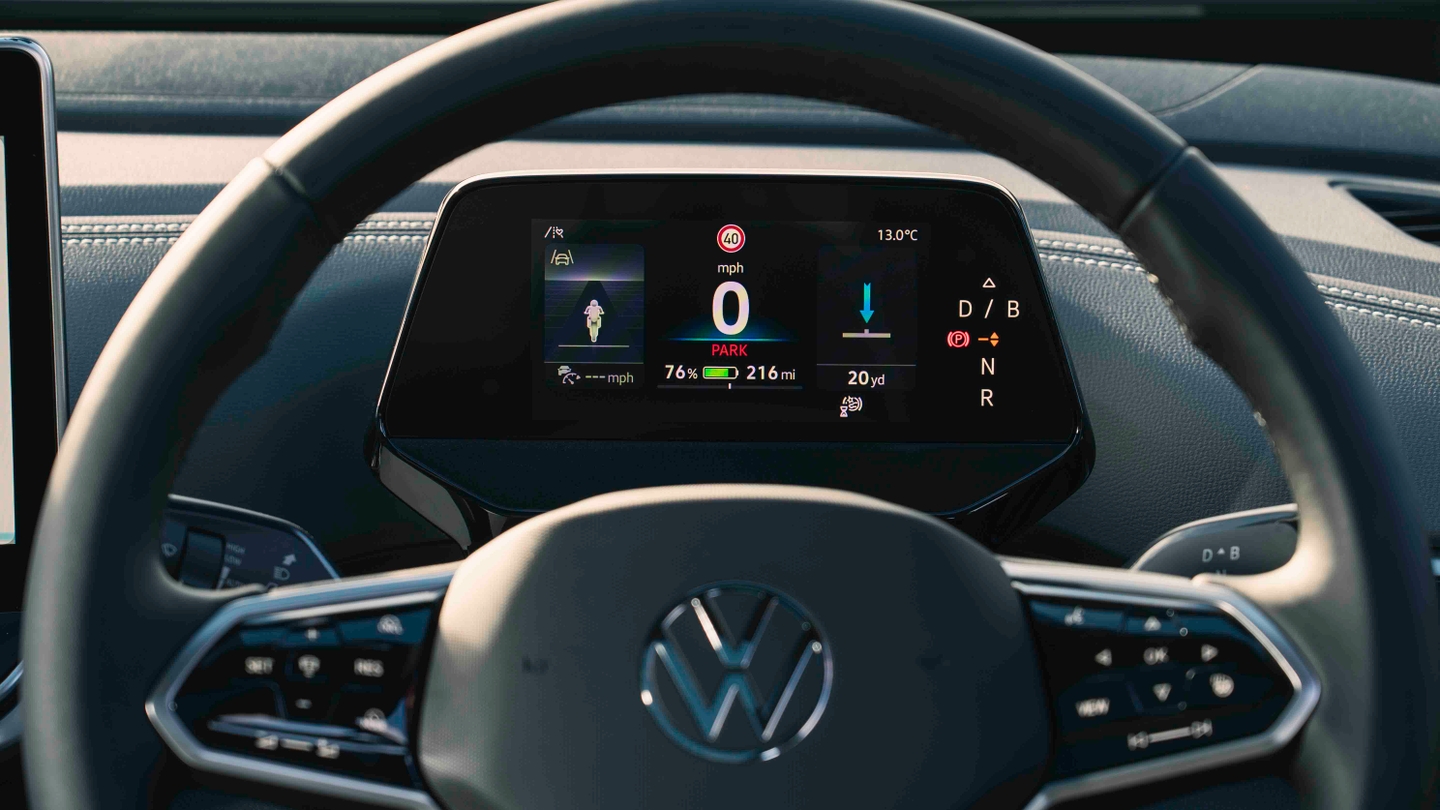
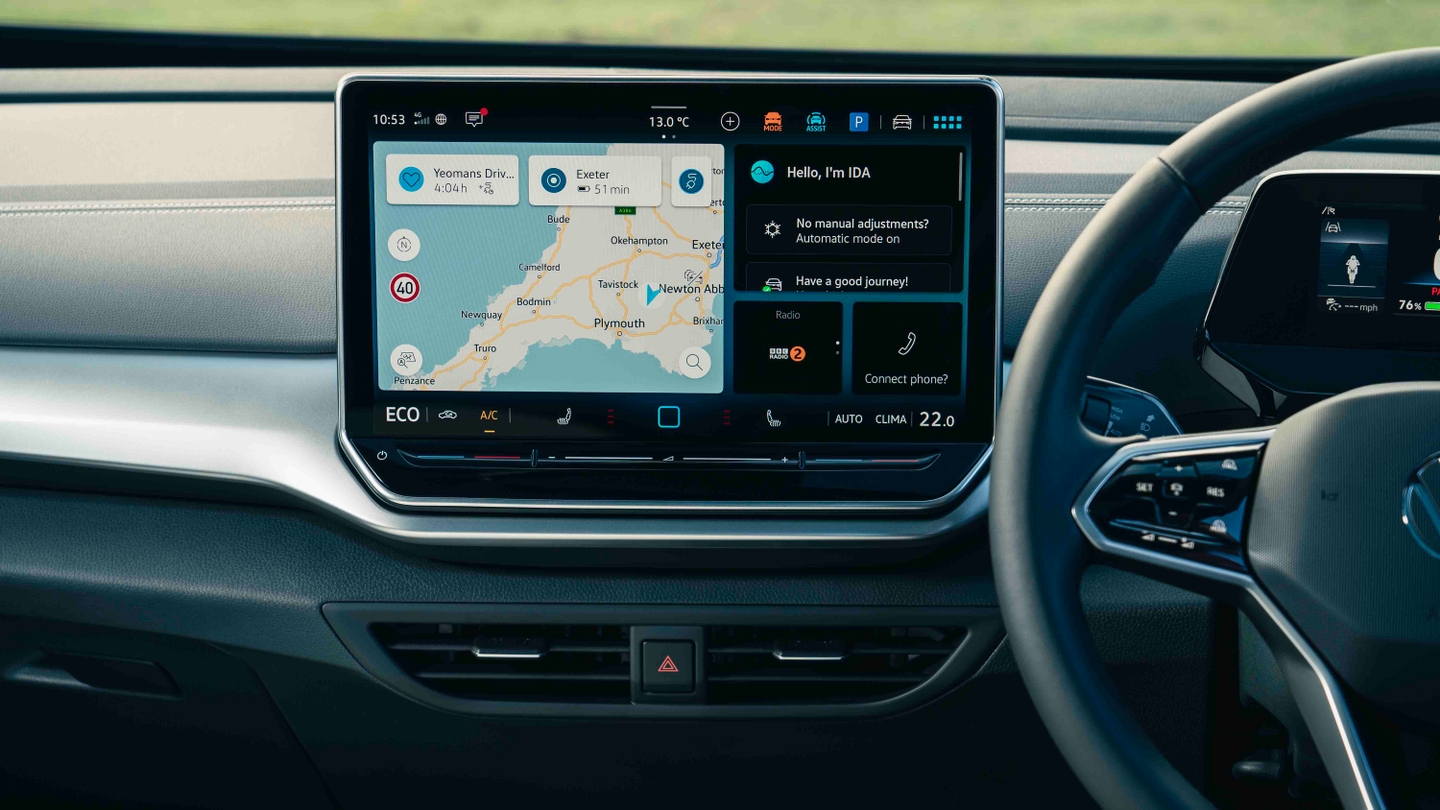
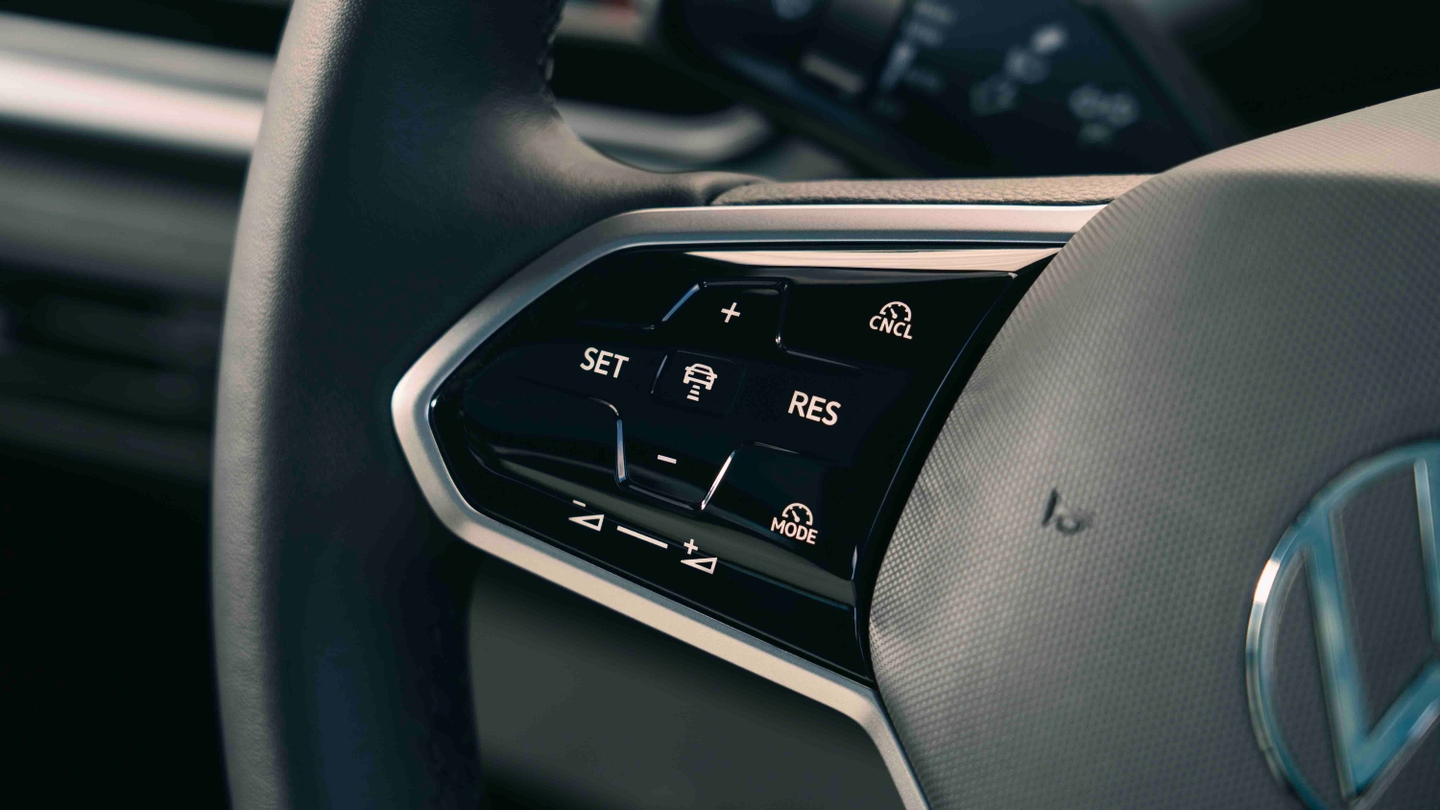
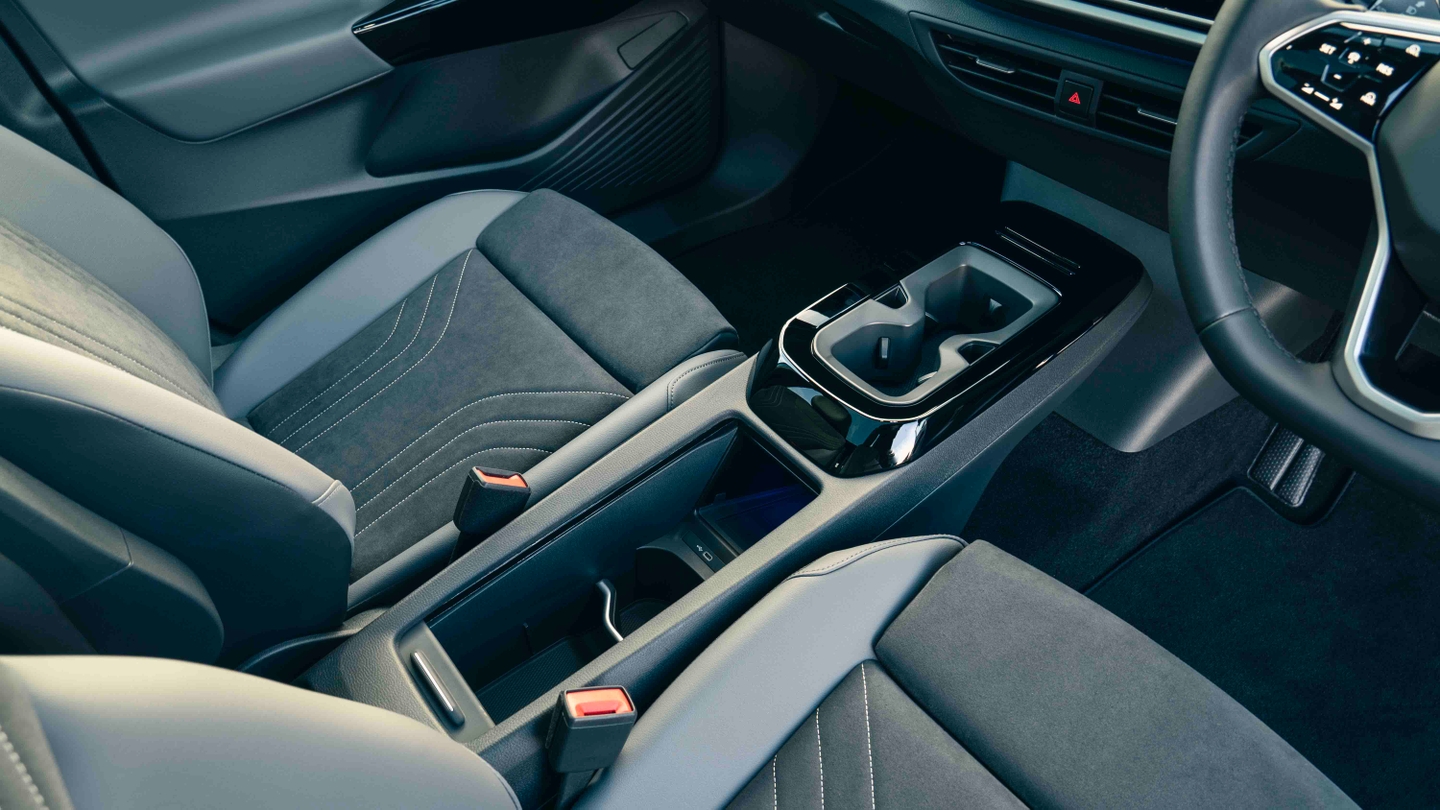
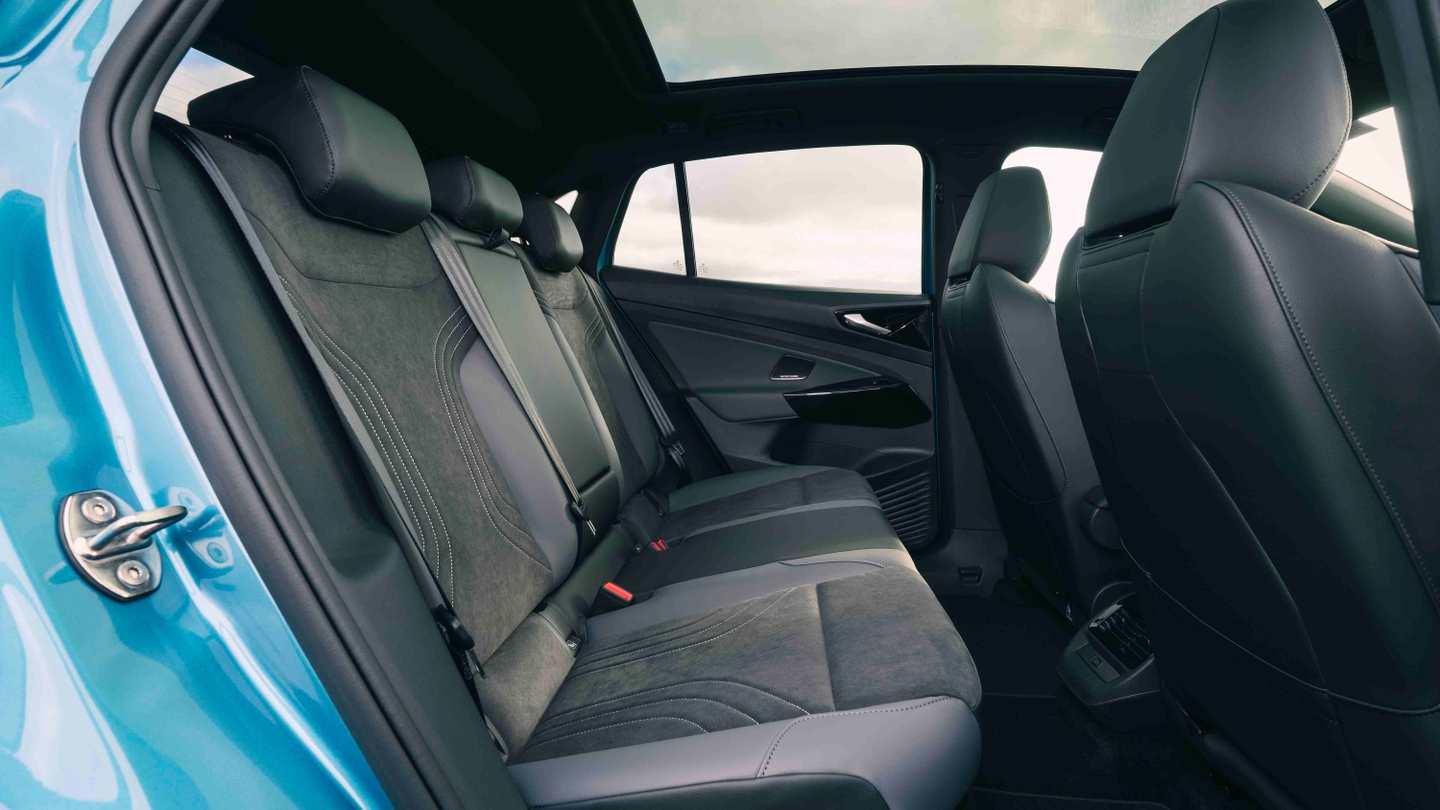
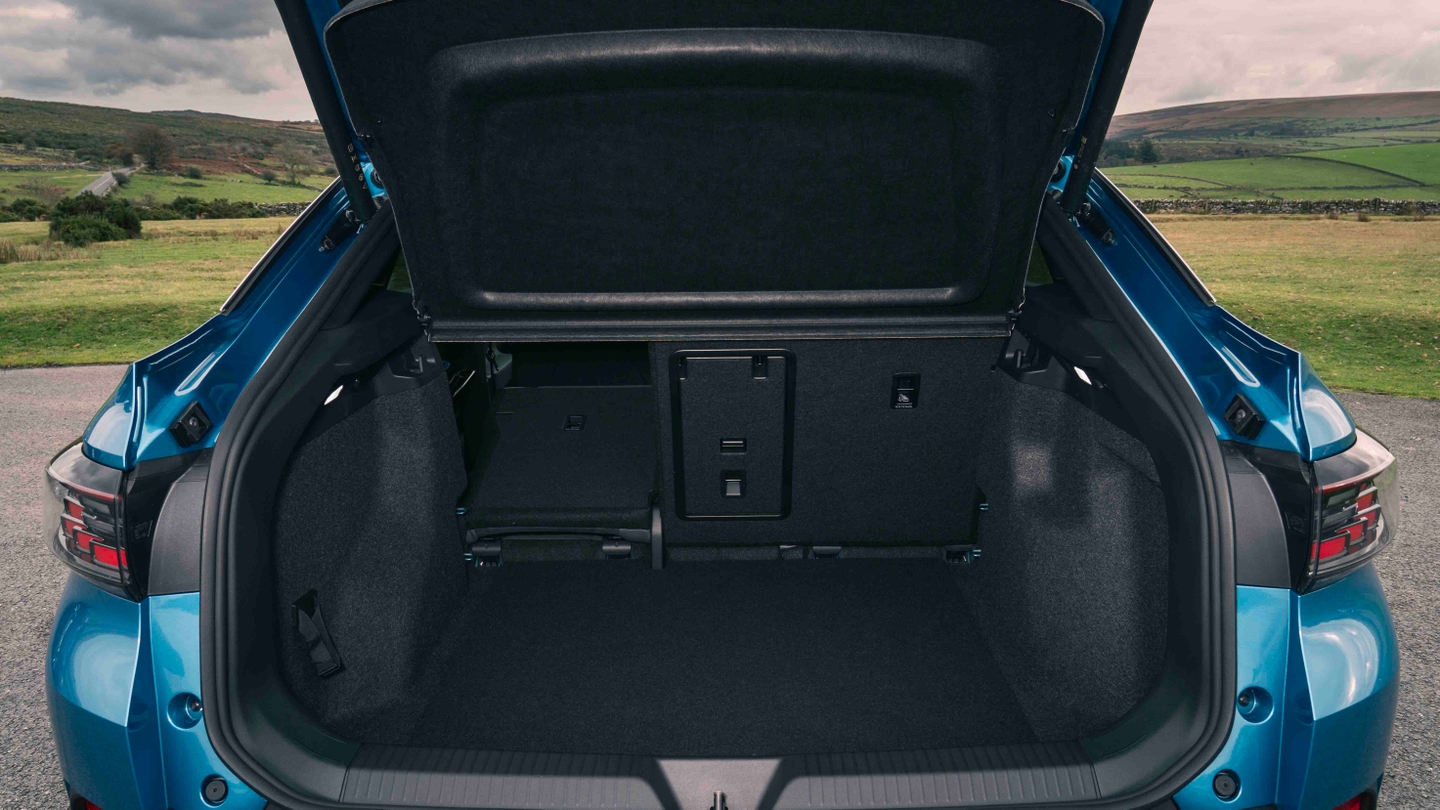
Volkswagen ID.5 Review

The Volkswagen ID.5 is the ideal car if you think the ID.4 looks a bit too much like an SUV.
Sounds like a car for a mere handful of people, then, but the ID.5 offers plenty of talents. The thing is, it’s not the only EV SUV that’s good.
- Still very practical, despite the coupe shape
- Floats over poor road surfaces
- Good range and performance figures
- More expensive and less practical than an ID.4
- Drab interior
- Rear headroom could be better
Should I buy a Volkswagen ID.5?
Coupe SUVs don’t always make a lot of sense. For extra cost, you’re taking away practicality and replacing it with a swoopier back end. To some, coupe SUVs look more stylish but, to others, they look bloated compared to the SUV they’re based on.
We thought that the ID.5 would feel pretty compromised compared to the ID.4. But the ID.5 might actually make more sense – especially as a used car. Even if it does look like a saloon car that’s been at Willy Wonka’s chocolate factory.
"What’s really impressive about the ID.5 is how it seems to float above the road"
Basic ID.4s on their steel wheels look drab and apologetic. All ID.5s get shiny alloys, and the differences don’t stop there. The front bumpers are different, with the ID.5 getting a sportier look, and that continues at the back with the tailgate spoiler. The popular Match trim also stands out with chrome window surrounds.

Of course, the ID.5 isn’t quite as practical as the squarer ID.4, but the difference is only noticeable when you want to load above the parcel shelf. The ID.5 is still a practical car because it’s big, at 4.6m long, 1.6m tall and 2.1m wide. In day-to-day driving, you’re unlikely to need extra space.
Besides the small-battery Pure Match edition, all ID.5s return over 300 miles to a charge. The bulk of the range also features a 286hp rear-mounted electric motor, which shoves the ID.5 forward with the acceleration to match a junior sports car. At the top of the range is the GTX model with even more power but, while this is even faster, it’s expensive, less efficient and too heavy to be really fun.
Interior and technology

There’s no prize for guessing which American EV maker VW copied when designing the ID.5’s interior. The 12.9-inch infotainment screen grabs your attention immediately – partly because it’s so big and partly because the rest of the interior is minimalist and uncluttered.
Our test car came with VW’s most recent infotainment software, which is a big improvement on the system fitted in earlier ID.5s. Not only is it quicker to respond, but it’s less buggy and it’s much easier to use. A thorough redesign put personalisation at the core, with the home screen and the app bar in the top right corner both allowing you to change things to suit you.

The vast majority of ID.5s come with a grey-on-black interior, which is pretty uninspiring. While the standard-fit ambient lighting adds a bit of sophistication at night, we’d love to see some more colourful interior colour schemes to match the sporty exterior styling.
Or some more premium materials. There’s a lot of plastic around the cabin and not too much in the way of soft-touch areas or interesting textures. Considering the ID.5 starts at almost £40,000, it doesn’t feel like it inside.
Don’t get us wrong – the build quality is impressive – but the mechanically identical Skoda Enyaq Coupe gets options such as tan-coloured leather seats, an attractive silver-and-red upholstery selection and textured panels across the dashboard. You wouldn’t expect a Skoda to feel more premium than its VW parent.

Still, the VW’s standard equipment is fairly generous. Essential-spec cars get automatic LED headlights, heated front seats, dual-zone climate control and keyless entry. There’s also a heated steering wheel, wireless Apple CarPlay and Android Auto, and adaptive cruise control. Match trim adds tinted windows and a reversing camera, plus matrix LED headlights and an electric bootlid on the Pro powertrain.
Black Edition adds a black styling pack, a panoramic glass roof, powered front seats and massaging seats, while GTX adds sports suspension, park assist, a top-view parking camera and a smattering of extra driver assistance tech.
Practicality

The back seats in the ID.5 are noticeably higher than the front seats – your rear passengers might feel like they’re lording it over you. That means the floor doesn’t feel too high, and your knees won’t be at your chest, although the high seats and sloping roofline does mean that the rear seats are only comfortable for average-height adults.
But, if you’re taking kids along, the high rear seats give them an excellent view out of the windows. Plus, the Isofix points are easily accessible and the impressive rear legroom gives plenty of room for even the bulkiest child seat – and forward-facing kids might not be able to kick your seatback!
Besides a half-width glovebox, the interior offers plenty of storage space. The door bins are big and, thanks to not needing a transmission tunnel, the ID.5 offers a massive and versatile central storage area behind the cupholders.

And the boot’s a good size, too. The 549-litre space should be plenty for family life – the boot will swallow a big pushchair or a couple of sets of golf clubs with ease. There are a couple of side pockets and a small underfloor storage zone, which could be useful for cable storage. It’s a slight shame that VW didn’t fit a tray under the bonnet that could be used for such a purpose.
Range and performance
There’s one ID.5 model with a smaller 52kWh battery – good for up to 227 miles between charges – but this ‘Pure Match’ version doesn’t make much sense, because it’s more expensive and not much better equipped than the Essential trim with the ‘Pro’ powertrain.
The Pro version is the one to go for, because it unlocks the bigger 77kWh battery and a much more powerful electric motor. Not to mention a wider range of trim levels. Up to 345 miles is possible from a full charge of this battery, which is competitive with the Hyundai Ioniq 5, Peugeot e-3008 and Tesla Model Y.

And, with over 100hp more than the Pure, the 286hp Pro powertrain sprints from 0-62mph in just 6.7 seconds – over two seconds quicker than the Pure model. The acceleration is very snappy in the Pro model, and it’s quick enough to pin you back in your seat when you give it the beans.
The dual-motor GTX wades in with 340hp and a 0-62mph time of just 5.4 seconds, courtesy of four-wheel drive. Even with a slightly larger 79kWh battery, the extra power and bigger wheels dent its range a little. Avoid using all the power and you’ll get up to 327 miles from a charge.
But we wouldn’t recommend the GTX if you’re looking for a fun car. We’ve driven it on a tight and twisty course that’s meant to replicate an Alpine pass, and it felt like a whale going up a drainpipe.
Driving and comfort

What’s really impressive about the ID.5 is how it seems to float above the road. You sit high, and even pretty terrible road surfaces are filtered out – removing the feeling of being connected to the ground. The illusion is broken a little over sudden jolts, where the suspension can’t fully hide the ID.5’s portly weight, but that’s understandable – it’s a thing that most electric SUVs have in common.
The steering is responsive and direct – there’s no sense of sloppiness through the rack. It should be pretty clear that the ID.5 isn’t going to offer driving fun, and that’s shown with the lack of communication between you and what’s going on at the wheels.

On the motorway, the slippery ID.5 is quiet and relaxing. Its shape means it should be quite efficient, too – we’d expect a real-world motorway range of about 250 miles to be possible. In mixed driving, 300 miles from a charge is definitely feasible.
One minor complaint we have is that the brakes feel a little soft – we’d like a steelier response from the pedal. That’s because the ID.5 has to juggle the physical brakes with the regenerative braking from the motor, which gives you plenty of braking power on its own. It’s something we’ve experienced in all the VW Group electric cars.






















